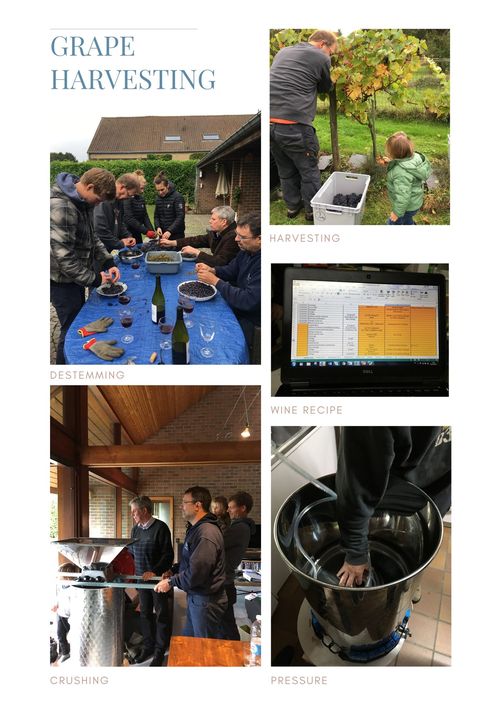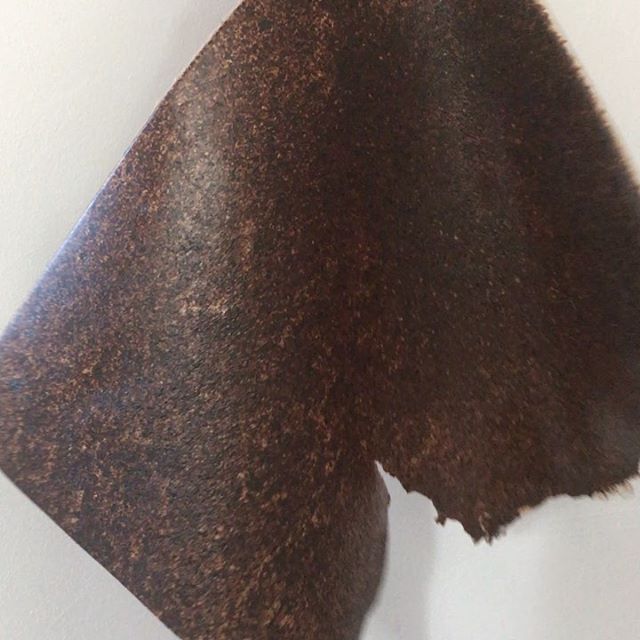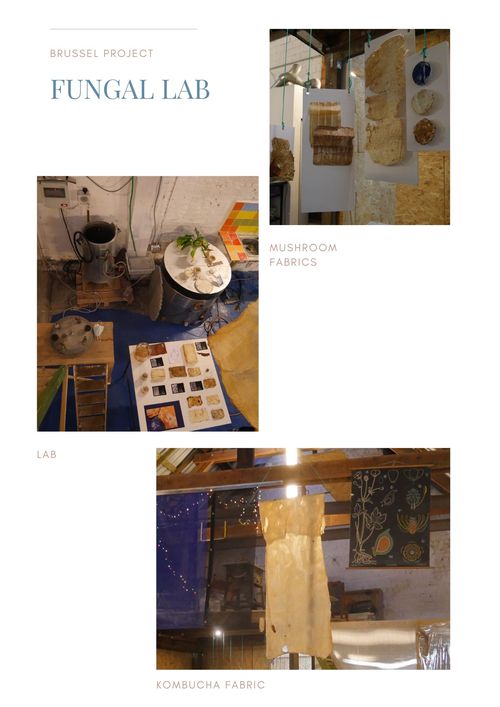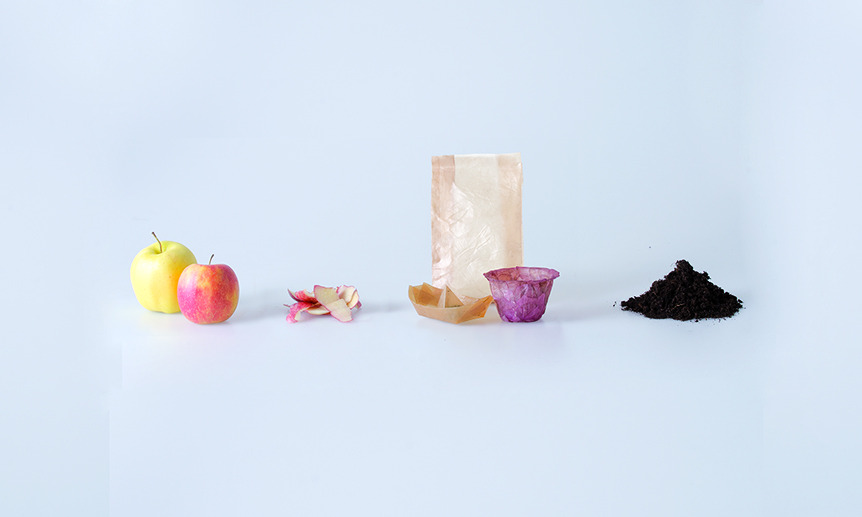6. Biofabricating¶
Very excited to work with bioplastics this week !
Mycelium¶
Mycelium Grow.
The fablab gave me a GIY mycelium kit. I worked with the kit, followed the recipe and put the mycelium in a mold that I made with the thermoformer.

I think that I made some mistakes while manipulating the mycelium because I got unwanted mushroom growing. I cook it anyway but the result was not satisfying.
Firts test bioplastic¶
To start, I made some of the recipes of the Bioplastic Cookbook.
The first one was the gelatine bioplpastic that I dyed with Curcuma.
This one shrunk a few but the result was quite good.
I then worked with agar agar and different concentrations of glycerine to see the differences.
They looked very good at first but did not last in time and started to shrink and distort. The glycerine concentration didn't change much the results.

The gelatine one worked pretty well, the result was strong, could be fold without breaking but was not resistant to water.
Grape pomace bioplastic¶
My stepfather is growing some grape vine and is making his own wine. We participated at the grape harvesting in September and made the first steps of the wine making with him.
I asked him to keep the grape pomace in order to use it for the biomaterial week.
Here's some photos of the grape harvesting.

I tried different recipes with the grape pomace and agar agar.
I got the recipes from materiom.org but the first tests where not satisfying at all, very fragile.
I then changed the recipe for more water and glycerine.

The last try was with gelatine as it was the best result so far. The result was strong, could be fold and had a nice look.

Inspirations¶
Fungal lab¶
This week I've met the people of the fungal lab, a new biolab specialize in funghi in Brussels.
I planned to visit the studio but the team prefered to meet in a café. They work on mycelium and kombucha.
They showed me photos of very big pieces of kombucha, very impressive.

From peel to peel¶
This project investigates sustainable alternatives using microbial cellulose as a substitute to the most commonly used plastic and paper.
Microbial cellulose, is made by the fermentation (culture) of bacteria and yeasts with fruits and vegetables leftovers. Therefore it was explored through a series of experiments and tryouts in order to discover its behaviour and potential
